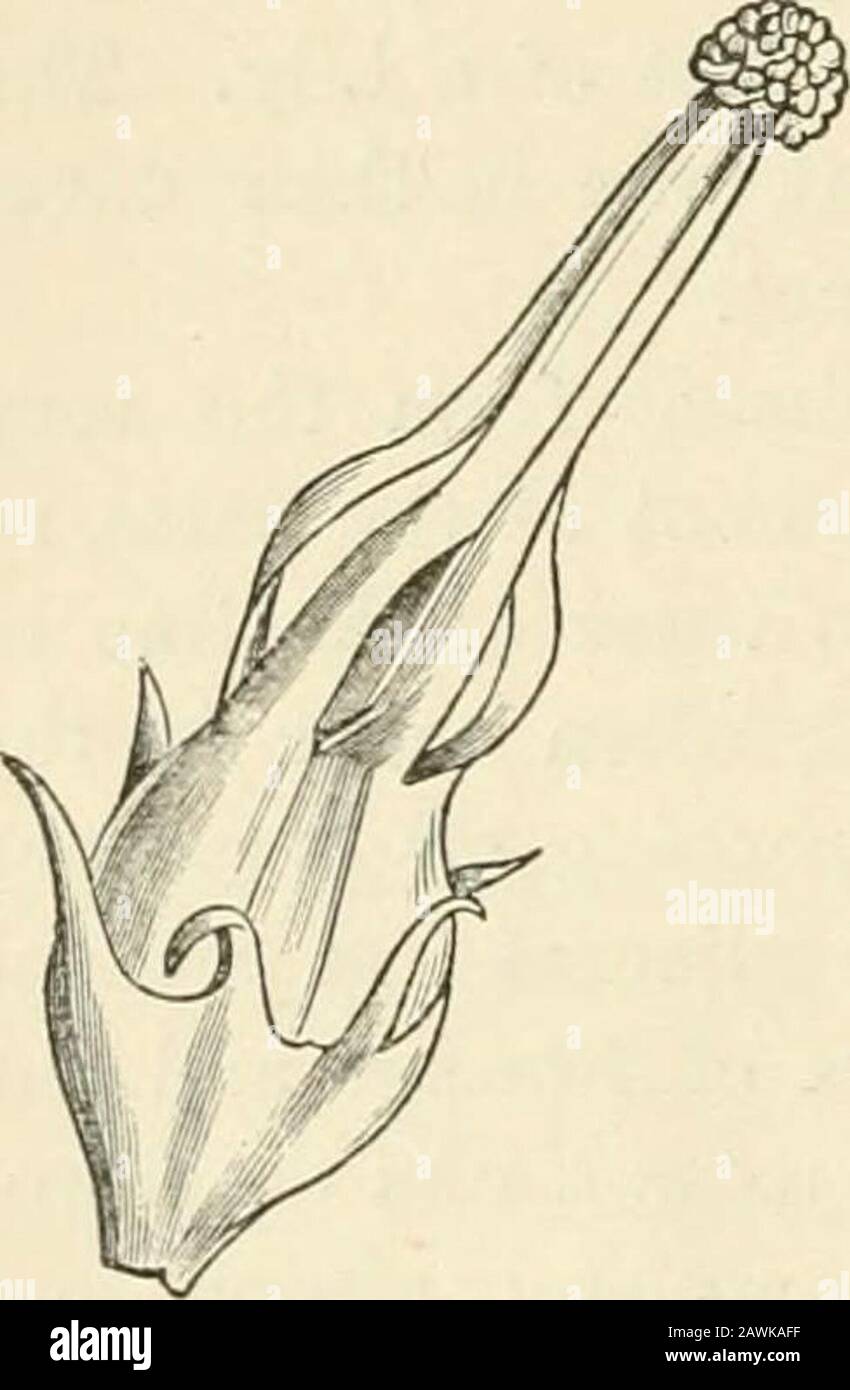The origin of floral structures through insect and other agencies . ntact bytheir edges, the veins ramify and anastomose all over thegeneral space between the two adjacent dorsal ribs, com-pletely obliterating all trace of the line of union betweenthem. In the case of the Primrose, however, the calyx hasthe exact appearance of five pinnately nerved leaves beingunited by their thin and impoverished edges, where there isnothing but translucent tissue without any cords at all. It is important to observe this more or less completemodification of the fibro-vascular system under congenitalcohesion,

Image details
Contributor:
The Reading Room / Alamy Stock PhotoImage ID:
2AWKAFFFile size:
7.1 MB (160.6 KB Compressed download)Releases:
Model - no | Property - noDo I need a release?Dimensions:
1278 x 1954 px | 21.6 x 33.1 cm | 8.5 x 13 inches | 150dpiMore information:
This image is a public domain image, which means either that copyright has expired in the image or the copyright holder has waived their copyright. Alamy charges you a fee for access to the high resolution copy of the image.
This image could have imperfections as it’s either historical or reportage.
The origin of floral structures through insect and other agencies . ntact bytheir edges, the veins ramify and anastomose all over thegeneral space between the two adjacent dorsal ribs, com-pletely obliterating all trace of the line of union betweenthem. In the case of the Primrose, however, the calyx hasthe exact appearance of five pinnately nerved leaves beingunited by their thin and impoverished edges, where there isnothing but translucent tissue without any cords at all. It is important to observe this more or less completemodification of the fibro-vascular system under congenitalcohesion, as it shows how much more highly differentiateda condition has been acquired than when the parts are free.In the latter case they represent more closely the forms andvenation of distinct foliar organs. As a curious instance of cohesion of both kinds in the same organ, may be mentioned the corolla of PJiyfeuma; the basal portion of which consists of five petals congenitally united ; but the five portions of the limb cohere by contact 7 50 THE STRUCTURE OF FLOWERS.. at the apex, and so form a tube which collects the pollenshed into it by the five free anthers, which are included within this corolla-tube (Fig. 9).They thus form the cylinder forthe piston action of the pistil whichcontinues to grow, and so sweeps outthe pollen beyond the extremity ofthe tube, just as it does from thesyngenesious anthers of the Covi-positce and Lobelia. The five portionsof the corolla thus cohering by con-tact subsequently become more or lessfree. The rationale of Cohesion lies inits adaptation to insect agency, and Fig. 9.—Ihi/teuma (after Miiller). • t j. j r • t implies a greater degree or specializa-tion than when the parts of the whorls are free. Thus inThalamifone, of such an order as Ranunculacea; with regularflowers and with all the parts of the perianth whorls free, theflowers are usually visited by a much greater number andvariety of insects than are those of orders of Corolliflorce.